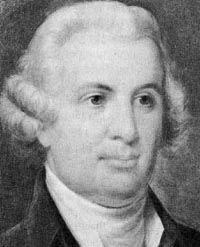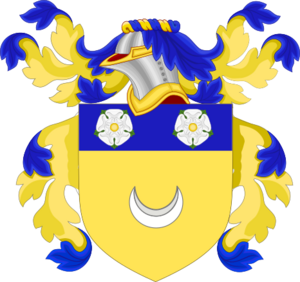William Hooper facts for kids
Quick facts for kids
William Thomas Hooper Sr.
|
|
|---|---|
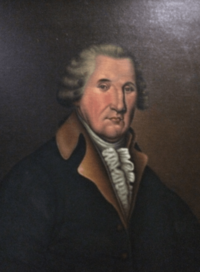 |
|
| Born | June 28, 1742 |
| Died | October 14, 1790 (aged 48) |
| Resting place | Guilford Courthouse National Military Park, Greensboro (re-buried) Hillsborough Old Town Cemetery, Hillsborough (original) |
| Occupation | lawyer, politician |
| Known for | Signer of the U.S. Declaration of Independence |
| Signature | |
William Hooper (June 28, 1742 – October 14, 1790) was an important American leader, lawyer, and politician. He is known as one of the Founding Fathers. As a member of the Continental Congress representing North Carolina, Hooper signed two very important documents: the Continental Association and the Declaration of Independence. These documents were key steps in America becoming an independent country.
Contents
Early Life and Education
William Thomas Hooper Sr. was born in Boston, Massachusetts, on June 28, 1742. He was the first of five children. His father, also named William Hooper, was a minister from Scotland. His mother, Mary Dennie, came from a respected merchant family in Massachusetts.
William's father hoped he would become a priest, like him. So, at age seven, William started attending Boston Latin School. This school was led by a famous teacher, Mr. John Lovell. In 1757, when he was 16, William went to Harvard University. He was a very hardworking student there. In 1760, Hooper graduated from Harvard with high honors, earning a degree called a Bachelor of Arts.
However, William decided not to become a priest. Instead, he chose to study law. He learned from James Otis Jr., a well-known lawyer in Boston who was known for his strong opinions. Hooper studied with Otis until 1764. After passing his law exam, he decided to leave Massachusetts. One reason was that there were already many lawyers in Boston.
Life in North Carolina
In 1764, Hooper moved to Wilmington, North Carolina. There, he started his law practice. He became a traveling lawyer for the Cape Fear area, working in different courts. Hooper quickly gained a good reputation among wealthy farmers and other lawyers in North Carolina. He also became more influential by representing the colonial government in several court cases.
In 1767, Hooper married Anne Clark. Her father was a wealthy early settler and sheriff of New Hanover County. William and Anne had three children: William (born in 1768), Elizabeth (born in 1770), and Thomas (born in 1772). Hooper quickly rose in his career. In 1769, he became a deputy attorney for the Salisbury District. Then, in 1770, he was appointed deputy Attorney General of North Carolina.
At first, Hooper supported the British government in North Carolina. As deputy attorney general, he worked with Governor William Tryon in 1768. Their goal was to stop a group called the Regulators. These Regulators were protesting against unfair taxes and government actions. In 1770, during a protest in Hillsborough, some Regulators reportedly pulled Hooper through the streets. Hooper advised Governor Tryon to use force to stop the rebels. He even went with the troops to the Battle of Alamance in 1771. Later, in 1775, he served in the North Carolina House of Burgesses, which was like a local government assembly.
Joining the American Revolution
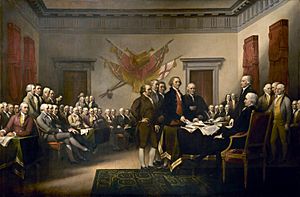
Over time, Hooper's support for the British government began to change. This caused some problems for him because of his earlier support for Governor Tryon. Some people even thought he was a Loyalist, meaning someone who stayed loyal to Britain. However, Hooper was eventually elected to the North Carolina General Assembly in 1773. There, he started to oppose new laws that would control the local courts. This made him less popular with Loyalists.
Hooper realized that the colonies would likely become independent. He wrote to his friend James Iredell, saying that the colonies were "striding fast to independence." He believed they would soon "build an empire upon the ruins of Great Britain."
During his time in the assembly, Hooper slowly became a strong supporter of the American Revolution and independence. After the governor closed the assembly, Hooper helped organize a new colonial assembly. He was also chosen for the Committee of Correspondence and Inquiry, which helped colonies communicate.
In 1774, Hooper was chosen as a delegate to the First Continental Congress. He served on many committees there. He was elected again to the Second Continental Congress. However, he often had to split his time between Congress and his work in North Carolina, where he was helping to form a new government. Because of this, he missed the vote to approve the Declaration of Independence. But he arrived in time to sign it on August 2, 1776.
In 1777, Hooper resigned from Congress due to money worries. He returned to North Carolina to work as a lawyer again. During the Revolution, the British tried to capture Hooper. His country home in Finian was unsafe, so he moved his family to Wilmington. In 1781, the British captured Wilmington. Hooper became separated from his family. The British also burned his homes in Finian and Wilmington. During this difficult time, Hooper relied on friends for food and shelter. He also got sick with malaria, and his friends helped him recover. After almost a year, Hooper was reunited with his family. They settled in Hillsborough, North Carolina. Hooper continued to work for the North Carolina assembly until 1783.
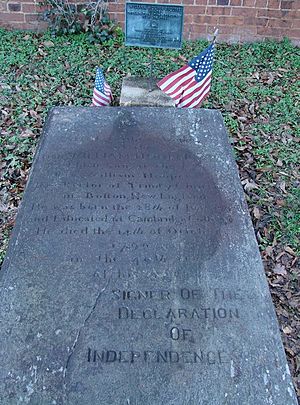
After the Revolution
After the American Revolution, Hooper went back to being a lawyer. However, he lost some public support because of his political views. Hooper sided with the Federalist Party. This was partly because of his important connections and his distrust of the lower class. He was also seen as being too forgiving towards Loyalists, which some people criticized. Some even called him a Loyalist because of his kind and fair treatment of them.
Hooper was called back to public service in 1786. He was appointed a federal judge to help settle a border dispute between New York and Massachusetts. However, this case was settled outside of court. In 1787 and 1788, Hooper worked hard to convince North Carolina to approve the new United States Constitution.
By this time, Hooper had become quite ill. He died on October 14, 1790, at the age of 48. He was first buried in the Presbyterian Churchyard in Hillsborough, North Carolina. Later, his remains were moved to Guilford Courthouse National Military Park.
His home in Hillsborough, the Nash-Hooper House, was recognized as a National Historic Landmark in 1971. It is part of the Hillsborough Historic District.
See also


